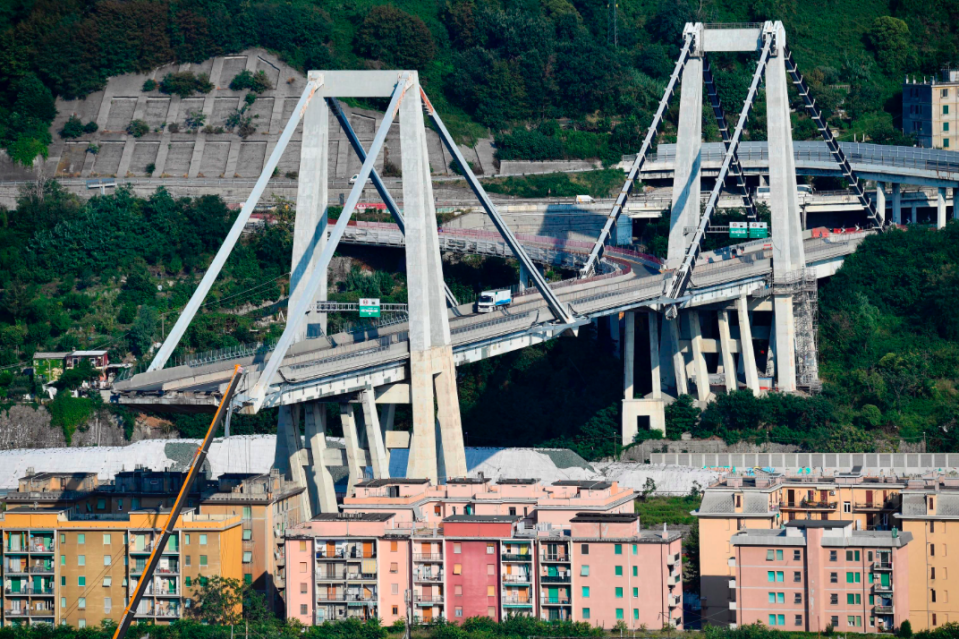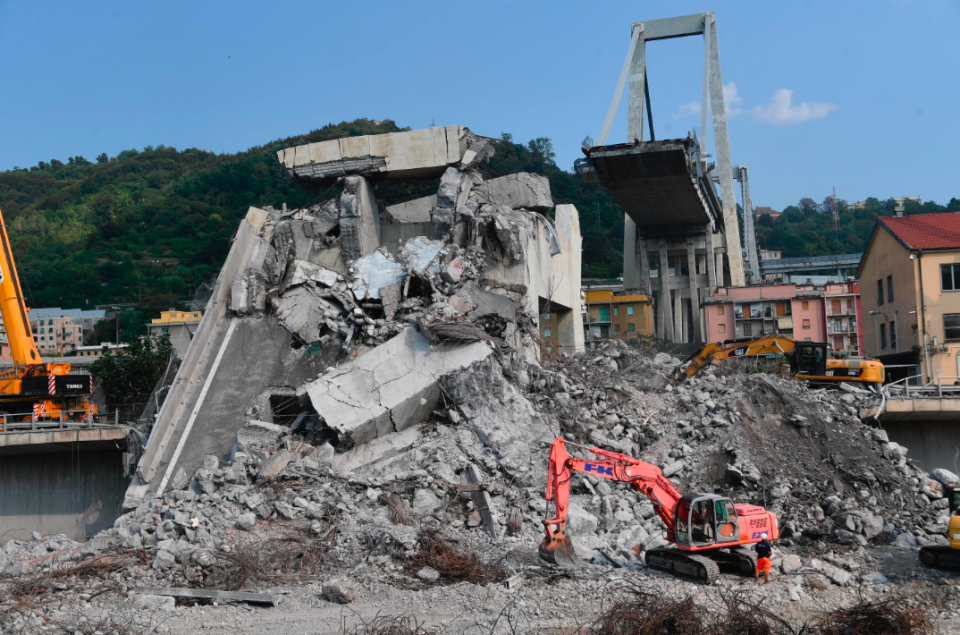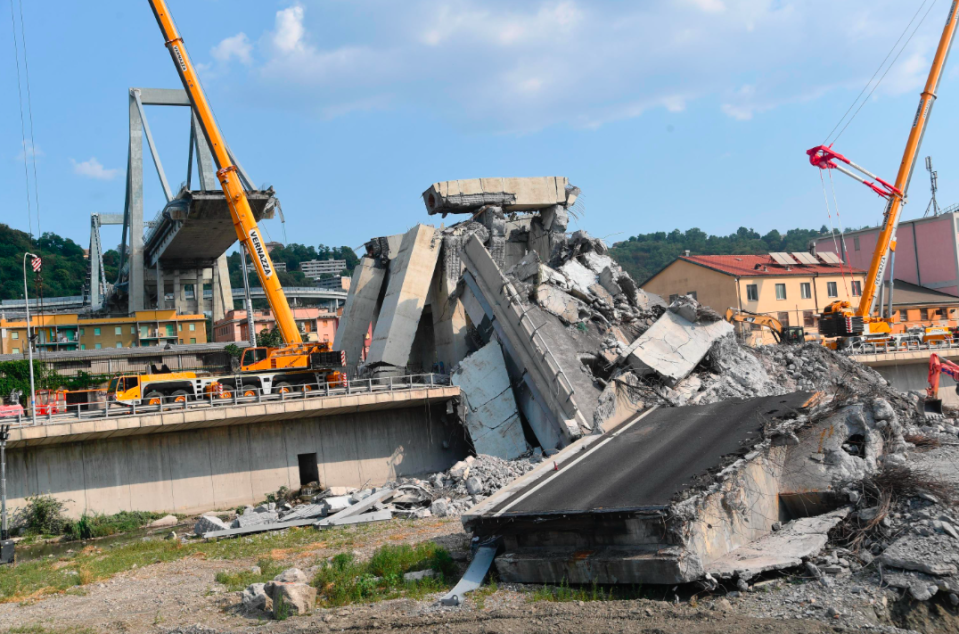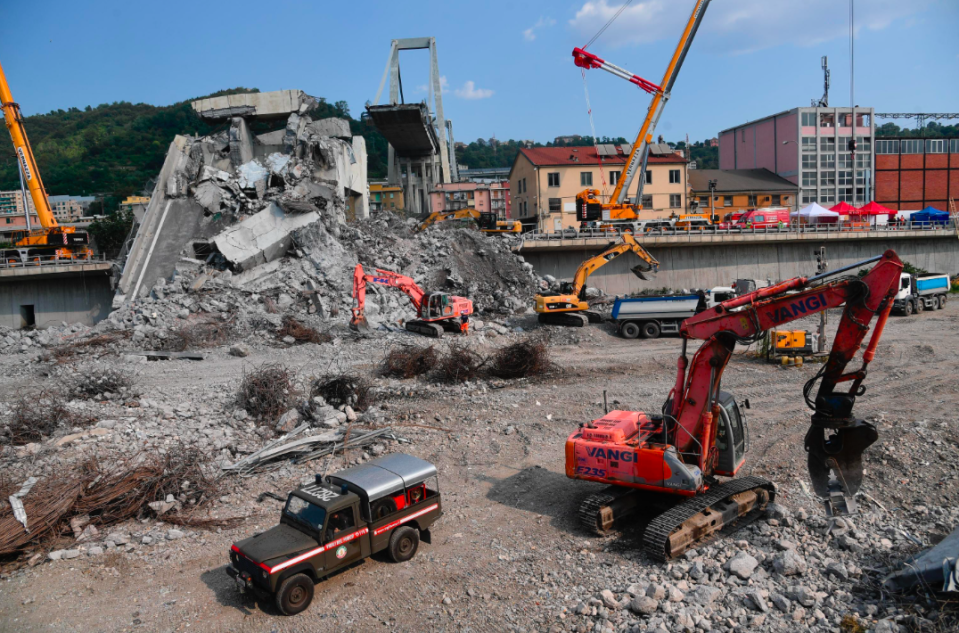Genoa bridge may take eight months to repair as it emerges designer warned of corrosion risk 40 years ago
The Genoa bridge that collapsed and killed 43 people is expected to take eight months to repair, according to the company behind the structure.
Giovanni Castellucci, chief executive of Autostrade per L’Italia, said that £448m has been set aside to repair the Morandi bridge, confirming that it will be made of steel.
Mr Castellucci told reporters: ’We hope that the speed of the reconstruction can also be a sign of the speed with which the city of Genoa is rising up again.’


The news comes as it emerged the engineer who designed the bridge in the Italian port town warned four decades ago that it would require constant maintenance to remove rust.
RAI state television broadcast excerpts Sunday of the report that the late engineer Riccardo Morandi wrote in 1979, 12 years after the bridge bearing his name was inaugurated in Genoa.
Morandi said at the time that there was already a ‘well-known loss of superficial chemical resistance of the concrete’ because of sea air and pollution from a nearby steel plant.
MORE: British air hostess credits yoga and SINGING for surviving 10 hours in the sea after falling off cruise liner
MORE: Man arrested after mum and daughter left critically hurt in random hammer attack
He said he chose to write about it because the degradation represented a particular ‘perplexity’ given the ‘aggressivity’ of the corrosion that was not seen in similar structures in different environments.
Morandi reaffirmed the soundness of the reinforced concrete bridge design he used but warned: ‘Sooner or later, maybe in a few years, it will be necessary to resort to a treatment consisting of the removal of all traces of rust on the exposure of the reinforcements, to fill in the patches.’
He recommended using an epoxy resin to cover the reinforcements with materials ‘of a very high chemical resistance’.

The cause of the collapse is under investigation, and a team of engineers appointed by the ministry of infrastructure and transportation carried out a preliminary inspection Sunday after rescue crews concluded their search for the missing.
The head of the government team, Roberto Ferrazza, said the preliminary survey suggested a series of possible causes and not just a simple collapse of the bridge support since the span appears to have initially experienced a distortion.
He said: ‘We have to look at the positioning of the rubble, considering that there was a break that provoked an imbalanced movement of the structure.’


Ferrazza was reportedly one of the engineers who knew about the advanced corrosion under way on the key bridge support that gave way, having attended a meeting of experts from the transport ministry and the company that manages bridge repairs in February.
Minutes of the meeting, which bear Ferrazza’s signature, recommended that the supports be reinforced given the ‘trend of degradation’ being registered.
On Sunday, dozens of Genoese residents gathered in a central piazza to both vent rage and pain over the collapse.
Many wrote messages and poems on sheets of white paper unrolled on the piazza cobblestones.


